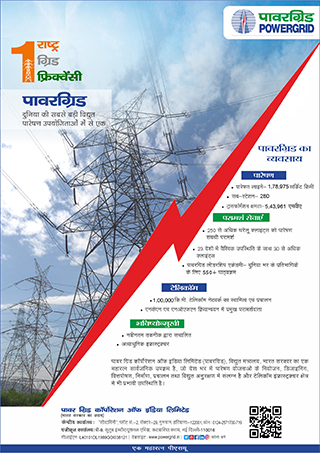whispers in the corridors
The 1000 MW Tehri Pumped Storage Project (PSP), one of India’s most strategically significant hydropower balancing facilities, has moved into its final stage of commissioning, with two of its four units already declared commercially operational. The remaining two units i.e. Unit-3 and Unit-4 are poised to commission shortly, marking the culmination of a project designed to add 1,000 MW of critical peaking capacity to the northern grid. The PSP uses the existing Tehri and Koteshwar reservoirs as its upper and lower basins, enabling a closed-loop “water recycling” operation. During off-peak hours, the reversible machines pump water from the lower to the upper reservoir; during peak demand, the same units generate power by releasing that stored water. This model supplies flexibility that intermittent renewable energy sources cannot provide on their own, and it offers system operators a dependable mechanism for balancing load, stabilizing frequency, and meeting evening peak demand. With four reversible 250-MW units housed in an underground powerhouse on the left bank of the Bhagirathi, the project is engineered for high-head operation featuring a head variation of nearly 90 metres. Once fully operational, the PSP will contribute 1,000 MW of peaking power and together with the existing Tehri and Koteshwar plants, the completion of the PSP will raise the total capacity of the Tehri Hydro Power Complex to 2,400 MW. With work on the final units progressing on schedule, officials describe the project as being “on the threshold of full-scale delivery,” a milestone likely to draw attention from power sector analysts, policymakers, and grid planners. As India’s renewable capacity expands rapidly, grid-balancing assets such as the Tehri PSP are increasingly seen as essential infrastructure. The final commissioning of the remaining units will mark not only the completion of a technically demanding project but also a significant upgrade to the nation’s ability to manage variability in the power system.
Send Feedback
- Three IAS officers in Bihar promoted as ACS (UPDATED)
- Niranjan Kumar appointed as DCIT, PrCCIT, Delhi (UPDATED)
- Ms Tarannum Verma deputed to Chhattisgarh govt (UPDATED)
- Nikhil Dhongari appointed as Deputy Secretary, National Health Authority (UPDATED)
- Light & Sound Show at Konark Sun Temple (UPDATED)
- Odisha Tourism marks striking presence at IITF (UPDATED)
- Power Ministry convenes IES taskforce to review foundational documents for IES
- GP Khutey appointed PCSTE, SECR
- VS Yadav appointed GM (Finance & Accounts), NHAI
- WB seeks Ops Officer-LCI, Congo Democratic Republic
- RLDA advertises JGM/ DGM (Elec Engg), Delhi posts
- RLDA advertises JGM/ DGM (S&T), Delhi posts
- SPM-NIWAS, Kolkata seeks Finance & Accounts Officer
- CEPI, New Delhi advertises various posts for Delhi, Lucknow, Kolkata & Mumbai
- Applications for Accounts and Law officers in NCW invited
- UPMRC advertises JGM-Ops for Lucknow, Kanpur & Agra
- Rajnath Singh on Sindh and Pak reaction
- INS Mahe Commissioned
- Agniveer Retention Review
- B Anoop appointed as Director (Tech), BHAVINI
- Anurag Sharma is only contender for MD, DFCCIL
- Balasugumar Daniel appointed as Director (Ope), CCI Ltd
- Appointments of ITAT Members on the horns of dilemma
- Did the Center give clarification on the Chandigarh Bill to avoid a Ladakh like protest?
- Workshop on effective communication postponed
- Secretary General LS likely to get one more extension
- Nine IPS officers retiring in November
- Will G. Sai Prasad be new Chief Secretary of Andhra Pradesh ?
- Taking Courts to the People: How IAS Praveen Chaudhary is Speeding Up Revenue Case Disposal in Anand, Gujarat




























